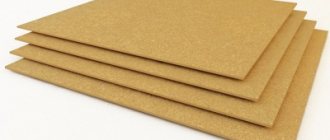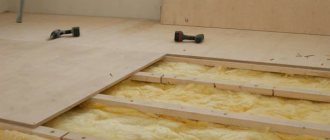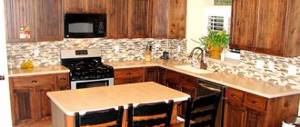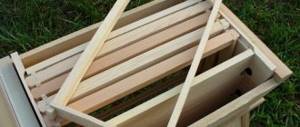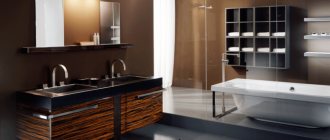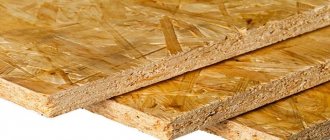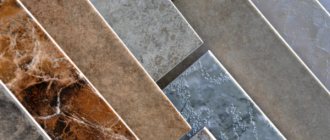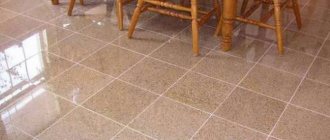Plywood is a material made from many natural wood layers that are glued together using a press. When carrying out various repair work, depending on the application, the most important role is played by the size and thickness of the plywood sheet. The production of modern products is also carried out taking into account the required external and functional features. Let's figure out what purpose the different sizes are used for.
Table
The most common sheet sizes
To accurately calculate the required amount of material, you should know the standard size of a plywood sheet. The sheet of material is:
- square;
- rectangular.
The most common sizes are the following (values are indicated in mm): 1525x1525, 2440x1220, 2500x1250, 3000x1500, 3050x1525.
Knowing the standard size, you can calculate the amount of material required for the work, as well as determine the cost estimate.
The dimensions and quality of plywood produced in Russia are regulated by GOST 3919-96, which has 2 editions - GOST 3916.1-96, GOST 3916.2-96. The first relates to the regulation of the quality of products made from coniferous wood, and the other, accordingly, relates to deciduous varieties.
Types, types and grades of plywood
Depending on the purpose, plywood can be:
- construction;
- furniture;
- structural;
- industrial;
- packaging
Plywood sheets have different thicknesses depending on their application
Depending on the glue:
- Waterproof (FC). Kabamide glue is used;
- Increased moisture resistance (FSF). The sheets are glued together with phenol-formaldehyde glue;
- Non-waterproof (FBA). Albumin-casein glue is involved in the process of joining sheets. Despite poor waterproofing, it is highly environmentally friendly;
- Capable of maintaining its protective functions even in water (FB).
- 4th grade. Very low quality, many external defects and short service life. The material is obtained as a result of adjustment in production and is considered a defect. To refine the material, unusable parts of the sheet are cut off, usually resulting in less than half remaining. Experts recommend using the floor for rough laying, and covering it with good quality plywood on top;
- 3rd grade. It is difficult to call such material a defect, because the percentage of defects is much lower than that of fourth grade plywood. But it is not recommended to use it for a “clean” floor;
- 2nd grade. Only small cracks are allowed, the length of which is less than 20 cm. The cost is lower than first-grade plywood, but it requires additional processing, and therefore additional costs;
- 1st grade. Cracks up to 20 mm are allowed. This plywood can be used for any purpose. Suitable for finishing floors;
- Elite plywood. The quality of elite plywood is at the highest level. Its surface is smooth and there are no defects. Suitable not only for finished floors, but also for making arches.
A visual representation of the surfaces of different types of plywood
Types of plywood by methods of processing:
- Laminated. Suitable for concreting due to its smooth surface. Also used in furniture production for the manufacture of decorative panels;
- With double-sided grinding. Most often used to make bed bottoms;
- Polished on one side. Excellent for finished floors. Easily laid on both concrete and wooden bases;
- Unpolished. Suitable for rough work only.
Various types of plywood
The most common types are FC, FSF, and laminated. They differ in moisture resistance, top sheet coating and type of glue.
What size and thickness of products are best to use for floor finishing? Square panels 1525x1525 are best suited; depending on the layout, you can choose a material of a different length and width.
For the floor, it is best to use a moisture-resistant material with a thickness of 12 to 20; you can lay two layers of boards 10 mm thick in a checkerboard pattern. It will provide a more uniform surface of the future floor, as well as its strength.
In this case, it will be easier to lay them out, cutting and sawing will be much easier. Additionally, thinner sheets are easier to move.
For a very flat floor, one layer of 10 mm is enough.
There is also thinner FSF plywood, the thickness of which is only 8 mm. The most popular sizes of such products made from hardwood are 1525x1525, 2440x1220 mm. Coniferous plywood sheets with a thickness of 8 are: 2500x1250 and 2440x1220 mm.
The area of application of 8 mm plywood is interior and exterior decoration. Coniferous varieties are suitable for flooring due to their resistance to fungi.
Plywood classification
Despite its apparent simplicity, plywood has a number of different classifications, among which the following main criteria can be distinguished:
- By quality (grade). This classification distinguishes different groups according to the type of quality of the top layer;
- By type of adhesive. This classification defines different degrees of moisture resistance of plywood depending on the adhesive composition used in manufacturing;
- By processing the top layer. This classification determines the type of processing of the top layer.
Plywood 10 mm thick
The most common sizes of 10 mm plywood sheets:
- square 1525x1525;
- plywood sheet size 10 mm rectangular 2440x1220, 3000x1500, 1525x3050. This applies to finished products available in stores. When contacting manufacturers, it is possible to order custom sizes.
The scope of application of such sheets is as follows:
- construction;
- furniture manufacture;
- industrial production.
Most often, 10 mm sheets are required for furniture production and interior decoration.
Plywood boards with a thickness of 11 mm are extremely rare; the most common are sheets of 10, or thicker ones of 12 and 20 mm. Commercially available 11 mm products are most often presented in squares of 1525x1525.
Laminated moisture-resistant plywood: sheet dimensions and weight
In the construction sector, industry, and furniture production, plywood materials of different thicknesses and dimensions are used. For example, large laminated plywood - 1220 x 2440 and 1500 x 3000 in thicknesses of 15, 18, 21, 24, 27... 40 mm - is used in monolithic construction, for the construction of hydraulic structures, floors, and so on.
Laminated plywood 6, 9, 12 mm with sheet sizes 1220 x 2440 and 1250 x 2500 mm is used for finishing floors, roofs and facades, furniture production, and so on. Its bending and tensile strength depends on the density of the veneer, as well as the size of the sheet. Products of large dimensions must have increased hardness, and vice versa.
Dimensions of plywood 20 mm thick
Traditionally, the production of finished material 20 requires gluing together 15 layers of veneer. At the same time, this value is not always the same, since the thickness of the veneer used cannot be ignored. For example, sliced veneer up to 3 mm is less flexible, but its strength is higher. On the contrary, if peeled veneer is up to 1.9 mm, it is more elastic, but its resistance to loads is less.
The standard size is a square 1525x1525. The material is very durable and has a large weight - 30.7 kg. You can also purchase a larger format.
Such products are used for laying interfloor floors, as flooring for parquet, for interior decoration, for creating formwork (for pouring foundations), and in the production of furniture. Shields and stands often have a base made of 20 mm plywood. Children's playgrounds are also being built from it.
This material comes with the FC or FSF markings; there is also the FB marking. It is the most moisture-resistant and can even withstand exposure to sea water.
It should be taken into account that plywood thickness of 20 is not a sheet. This product is a plate. This applies to all material whose thickness is greater than 12.
Determining the thickness of plywood for the floor by joists
The subfloor on joists is a frame covered with sheet material, in particular plywood. The greater the thickness of the plywood sheet, the less will be the deflection under load, the higher the structural rigidity and durability. However, since plywood is a rather expensive material, it is often necessary to select the best option rather than using the most rigid material.
To determine the optimal parameters, the following factors must be taken into account:
- The thickness of the plywood greatly depends on the distance between the joists. With a distance between the frame beams of 0.5 - 0.7 m, to ensure the necessary rigidity it must be at least 15 mm.
- Depending on the mechanical load on the floor, plywood of different thicknesses is used for different types of premises. So, for example, with a distance between joists of 400 mm in an apartment or private house, plywood with a thickness of 10-12 mm is sufficient, and under the same conditions for public and industrial premises it is advisable to use material with a thickness of 22 mm or more.
- When choosing this option, it is necessary to take into account the option of finishing the floor covering. Linoleum and laminate will not have a significant impact on the subfloor, but ceramic or marble coatings, due to their weight, can significantly deform the flooring, so before you finally choose the thickness of the plywood, you need to know what the final coating will be.
Laminated plywood
This material is very moisture resistant. This plywood is produced by applying a special polymer film to its surface on one or both sides.
This panel can withstand temperature changes and other influences well. Due to this, laminated products are widely used in various industries. The standard dimensions of laminated plywood sheet are as follows (mm):
- 2440x1220;
- 2500x1250;
- 1220x2440;
- 1250x2500.
Grade of laminated plywood
The dependence of price and quality of manufacture of waterproof wood-based panel material is expressed in its division into classes. In accordance with GOST, four types of products are produced:
- first class - laminated coating without blisters and scratches, the film completely covers the entire area of the sheet, overlapping of laminate strips is allowed;
- second class - swelling of the coating, small scratches on the surface of laminated plywood are allowed;
- third and fourth classes - unlimited coating defects, scratches and cracks, lack of film, etc.
Grade 1 laminated plywood is used for finishing walls, furniture, and floors. Materials of grades 2, 3 and 4 are suitable for rough finishing, the production of temporary fencing, cladding of utility buildings and packaging.
Standard plywood sheet dimensions
Plywood thickness
Plywood with a thickness of 4 to 40 mm is available on sale.
- 4 mm plywood is used for the manufacture of various containers, furniture and also for creativity.
- 6 mm plywood is used to line the walls, floor and ceiling.
- 8 mm plywood for leveling walls, ceiling and floor.
- 10 mm is the minimum thickness for the subfloor.
- 12mm is the ideal thickness for a subfloor; thicker plywood options are simply not practical.
- 18 – 21 mm – plywood is very ideal for formwork, at least one side must be laminated.
Plywood sizes
Since plywood is sold in sheets, there are naturally standard sizes for this material. On sale you can find sheets of the following sizes:
- 1525×1525 mm;
- 1525×1475 mm;
- 1525×1350 mm;
- 1525×1270 mm;
- 1525×1220 mm;
- 1475×1475 mm;
- 1270×1270 mm;
- 1220×1220 mm.
Large-format sheets are also available; they have the following dimensions:
- 3050×1525 mm;
- 3000×1500 mm;
- 2500×1250 mm;
- 2440×1220 mm;
- 1830×1525 mm.
Of course, if the city is not large, then the hardware store may not have all sizes available, so it is best to inquire about the size of plywood at the retail outlet where this material will be purchased.
Plywood Density
The density of plywood depends on the type of veneer from which the material is made.
- The density of coniferous plywood is 650 kg/m3.
- The density of birch plywood is 750 kg/m3.
What thickness can it be?
Of course, length and width are far from the only parameters by which plywood can differ. Another important indicator is its thickness. In the manufacture of containers and furniture, for example, fairly thin sheets are used. In finishing work, as well as in the construction of buildings, much thicker plywood is used. The dimensions in this regard depend both on the number of layers and on the thickness of the veneer.
formaldehyde resins.
- FOF – laminated plywood. In this case, the outer layers of the sheets are additionally glued with a special film, which serves as excellent protection not only from moisture, but also from ultraviolet radiation, as well as from exposure to various types of aggressive environments.
